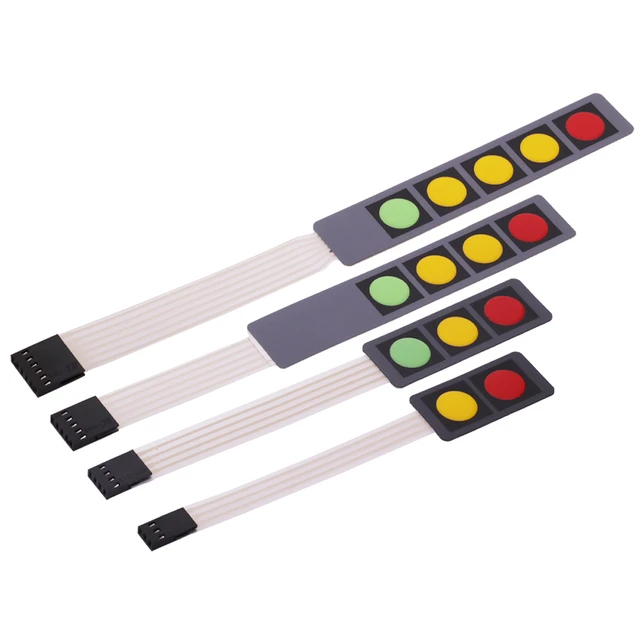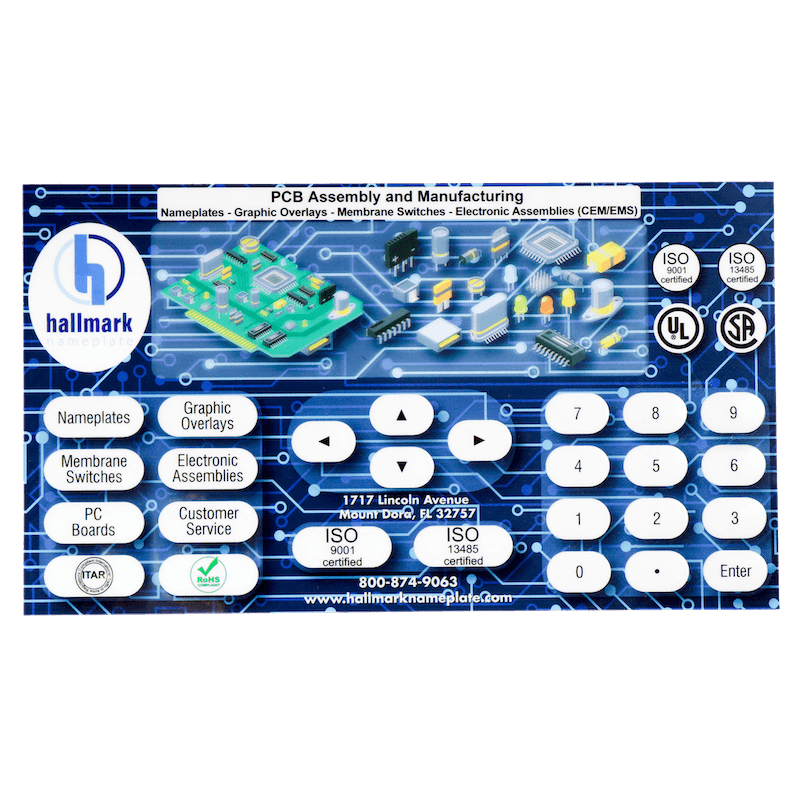Membrane Switch: Reliable, Cost-Effective, and User-Friendly Control Systems
Membrane Switch: Reliable, Cost-Effective, and User-Friendly Control Systems
Blog Article
The Benefits of Using Membrane Layer Switches Over in Consumer Electronics
Membrane buttons are significantly acknowledged for their significant advantages in customer electronics, particularly in improving customer communication and simplifying manufacturing procedures. The flexibility in layout allows for customized options that meet varied consumer requirements.
Boosted Customer Experience

In today's competitive landscape of customer electronics, improved user experience is paramount; nearly 85% of individuals prioritize intuitive interfaces. Membrane changes play an important duty in attaining this degree of use.
The responsive comments supplied by membrane buttons is important for leading user actions, making certain that commands are signed up accurately. This feedback mechanism enhances and decreases mistakes user complete satisfaction, promoting a favorable connection in between the user and the tool. In addition, the customizable nature of membrane layer switches enables suppliers to customize interfaces to specific customer needs, making tools a lot more easily accessible and inviting.
Additionally, membrane buttons can incorporate backlighting and graphic overlays, further enhancing visibility and functionality in diverse settings. This flexibility makes sure that devices remain useful and easy to use, despite the setup. Overall, the integration of membrane switches over right into customer electronics considerably improves customer experience, driving brand name commitment and fulfillment in an increasingly open market.
Cost-Effective Production
Customer electronics manufacturers are regularly looking for ways to balance top quality with price, and membrane layer buttons provide an engaging solution for economical production. These parts are inherently easier than standard mechanical buttons, which reduces both production costs and complexity. The lightweight design of membrane layer changes enables lower delivery expenditures and easier integration into portable tools, better improving their allure in a competitive market.
Makers can create membrane buttons in high volumes, making use of economies of range. This automation ability ensures regular top quality while considerably decreasing per-unit costs. Additionally, the products used in membrane switches, such as polyester and polycarbonate, are frequently cheaper than those required for conventional button innovations, contributing to general expense savings.
The manufacturing procedure for membrane layer switches generally needs fewer steps and much less labor contrasted to other switch kinds. This structured approach not just reduces labor expenses but additionally speeds up time-to-market, allowing firms to respond promptly to consumer demand. The mix of decreased material expenses and efficient manufacturing procedures positions membrane switches as a smart financial investment for producers aiming to deliver high-grade customer electronics at affordable price factors.

Style Flexibility and Personalization
While traditional mechanical switches commonly impose constraints on design due to their bulk and needed placing devices, membrane buttons supply unequaled versatility and modification choices for consumer electronics. This ingenious technology allows designers to create sleek, low-profile user interfaces that can effortlessly incorporate into different product aesthetic appeals, from mobile phones to kitchen appliances.
Membrane switches can be created in practically any type of form or size, enabling producers to customize the design to details ergonomic and practical needs. This adaptability not just improves individual experience but likewise permits imaginative styles that straighten with brand identification. Moreover, making use of printed graphics on membrane switches over uses the opportunity for elaborate designs and lively colors, which can be conveniently modified without substantial price implications.
Additionally, membrane layer switches can incorporate numerous performances into a single layer, check lowering the need for several elements and simplifying setting up processes. This streamlined layout technique lessens room and weight, making it perfect for portable customer electronics. In general, the layout versatility and customization abilities of membrane switches encourage suppliers to innovate, inevitably leading to more engaging and easy to use products.
Toughness and Reliability
As innovation remains to evolve, the resilience and integrity of membrane buttons have actually become critical factors to consider for makers in the consumer electronic devices sector (membrane switch). Membrane layer switches are designed to endure extreme ecological conditions, consisting of temperature changes, dampness, and dust direct exposure. Their robust building typically entails multi-layered products that provide a reliable barrier versus pollutants, ensuring longevity and consistent efficiency

Moreover, membrane switches can withstand a considerable variety of actuations without loss of functionality, typically exceeding numerous cycles. This sturdiness converts to decrease replacement expenses and lowered downtime for customers and suppliers alike. Overall, the mix of environmental durability and mechanical reliability makes membrane layer switches over a click to read more critical choice for consumer electronics, ensuring that gadgets continue to be reliable and operational throughout their desired lifespan.
Streamlined Item Growth
The toughness and integrity of membrane switches significantly contribute to streamlined product development in the consumer electronics field. By integrating these buttons early in the design procedure, makers can decrease the intricacy and variety of components needed in their products (membrane switch). Membrane switches are light-weight and small, permitting extra reliable space application within gadgets, which can result in simplified assembly procedures
In addition, the personalization abilities of membrane layer buttons make it possible for developers to customize attributes especially to consumer needs without sustaining excessive expenses or delays. This adaptability fosters technology, as firms can swiftly repeat styles based upon market responses, eventually increasing the time-to-market for new products.
The simplicity of manufacturing membrane layer switches additionally plays an essential role in item growth. With contemporary printing methods and materials, manufacturing can be scaled efficiently, minimizing lead times and decreasing waste. This causes lower manufacturing prices, improving total productivity.
Conclusion
In conclusion, membrane layer switches significantly enhance consumer electronic check here devices by offering an enhanced individual experience, cost-efficient manufacturing procedures, and functional layout options. The assimilation of membrane layer changes represents a calculated selection for producers seeking to enhance product layout and performance.
Membrane layer switches are increasingly identified for their substantial advantages in customer electronics, particularly in enhancing user communication and improving manufacturing processes. Furthermore, the products made use of in membrane layer switches, such as polyester and polycarbonate, are frequently much less expensive than those required for traditional button technologies, contributing to total cost financial savings.
The production procedure for membrane layer changes commonly calls for fewer steps and much less labor compared to other button kinds. Unlike typical mechanical switches, which may put on out over time, membrane layer changes use a closed design that lessens the danger of mechanical failing.In verdict, membrane layer switches significantly enhance consumer electronics by supplying a boosted individual experience, cost-effective production processes, and functional design options.
Report this page